2010 Yamaha FZS Review
Yamaha's most nimble powerhouse...with room or three
Yamaha’s most aggressive, most nimble runabouts are undoubtedly the FZ models, aggressive carvers that evoke memories of the GP series they effectively replaced. But don’t think all the fun is limited to only two passengers. As Yamaha proves with the FZS, three’s company…as long as they know how to hold on tight.
Size Matters
The FZS may be identical to the FX in terms of basic dimensions — length and beam — but the two craft feel noticeably different on the water. The reason is found under the waterline, where the FZS sports a shorter wetted surface, and softer chines that allow it to deliver a lean-in style ride that will seem natural to aggressive riders. A larger pump inlet loads the pump for better acceleration; it’s balanced with lifting strakes that get the hull up and out of the water, and a dihedral shape to the keel in front of the pump. That’s a throwback to the GP models.
The engine providing the push, however, is identical to the FX SHO. It’s the industry’s biggest at 1.8 liters, and is supercharged and adds an intercooler to get the maximum power out. Top speeds, depending on conditions, average 66-68 mph. I’ve pushed the 68 mph mark several times, while chalking up acceleration times below the 2.0-second mark. I like the smooth feel of the electronic throttle. It replaces the mechanical setup used on traditional craft, but in this sportier setup, does not get the same cruise control and no-wake mode features of the FX SHO. That’s probably appropriate for the FZ audience.
Stretch It Out
Yamaha tried a new idea when it introduced the FZ models. Apparently research showed that sit-down buyers like to actually stand up in certain conditions. I’d say it’s almost a must in rough water. Rather than place riders in a bent-over position, Yamaha designed a handlebar setup that actually telescopes, rising as much as 4” above its lowest setting to allow riders to assume a more comfortable stance in these instances. It’s comfortable and it works.
But as I noted last year, it also lowers more than the normal position, which actually ties in well with the craft’s hard-cornering, lean-in style. Drop the bars to the lowest setting and you feel like you’re piloting a souped-up Superbike down a curvy mountain road. The hull holds to the water like it’s on rails, and you literally get a feeling of flowing through the curves in that man-and-machine-being-one feeling delivered by the best performance machines. In short, it’s fun. It’s also proven on the racecourse, with the FZR dominating the Pro Stock class in 2009.
But Yamaha also stretched out something else on the FZS, the seat. Essentially this is the same boat as the two-passenger FZR, but with a different design to the back portion of the seat to extend the seating area and accommodate three-passengers.
Why stretch out what seems like a good two-seater? To accommodate towing is one reason. The FZS gets a tow eye, a grab bar, as well as spring-loaded boarding ladder to get towees up and out of the water. Haul them all in comfort during family time, then enjoy the same aggressive powerhouse as the FZR when solo.
More, more, more…
A boat like the FZS benefits from its power-to-weight ratio, so Yamaha wisely uses their lighter weight, NanoXcel hull material, made from a compound that reduces weight while increasing strength. Yamaha designers also wisely give the craft sporty, analog-style instrumentation. It just goes with the boat’s style. Storage is 21 gallons, including a handy glovebox.
I’ve noted my mixed feelings about Yamaha’s manual trim system for years, so I won’t stop now. On the plus side you can “feel” your position without searching for a display and removing your eyes from the water. Actually shifting at high speed, however, just doesn’t work well. There’s too much force exiting the pump, and you’re fighting against it trying to manually reposition the nozzle. Likewise I like Yamaha key fob security remote (which can also activate a low-rpm mode), but I don’t like having to worry about losing it.
But Yamahas can also run on 87-octane happily all day long. I’m cheap, so that’s a big plus in my book.
The Final Word
I like boats that respond well to rider input, so I’m a fan. Hop aboard one, lower those bars, and carve up some glassy water and I’m betting you’ll be, too.
| 2010 Yamaha FZS Specs | |
| Length | 132.7 inches |
| Beam | 48.4 inches |
| Curb Weight | 813 lbs |
| Engine | Four-cylinder, supercharged, intercooled |
| Displacement | 1,812 cc |
| Bore and Stroke | 86mm x 78mm |
| Compression Ratio | 8.6:1 |
| Rated Horsepower | N/A |
| Fuel Capacity | 18.5 gal. |
| Combined Stowage Capacity | 21.3 gal. |
| Colors | Velocity Yellow; Metallic Racing Blue |
| Price | $13,199 |
Related Reading
2010 Yamaha FZR Review
2010 Yamaha FX Cruiser SHO/FX SHO Review
2010 Yamaha FX HO/FX Cruiser HO Review
All Things Yamaha on PersonalWatercraft.com
Get PersonalWatercraft.com in your Inbox!
Like PersonalWatercraft.com on Facebook
Comments
Most Popular
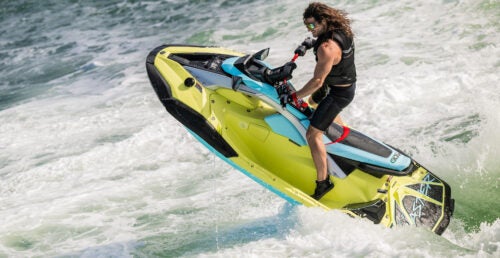
2025 Yamaha JetBlaster PRO 2-Up Review
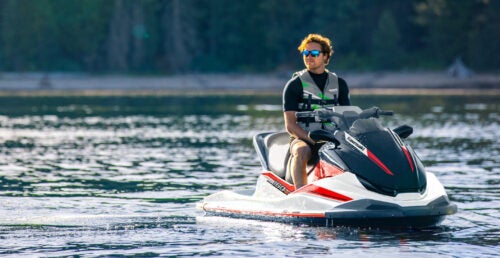
2024 Kawasaki Jet Ski STX 160X Review
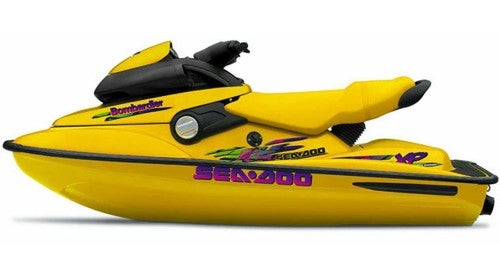
Remembering the Sea-Doo XP
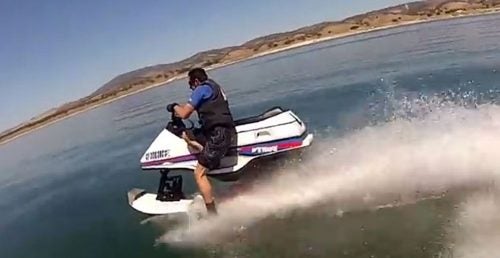
Whatever Happened to the Wetbike?
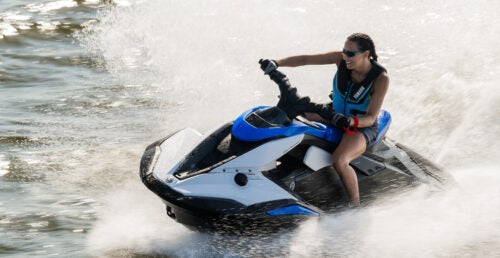
2025 Yamaha JetBlaster Review
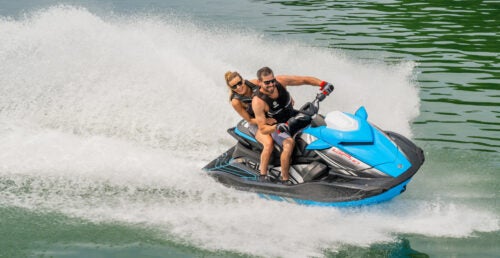
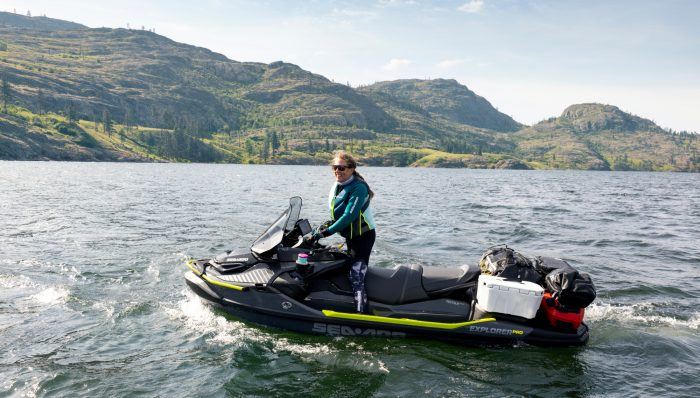
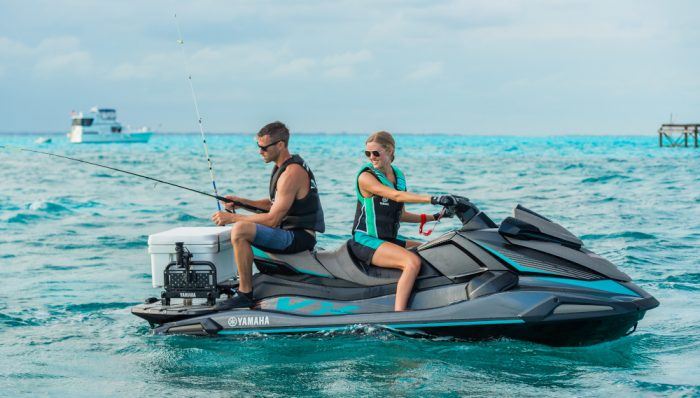
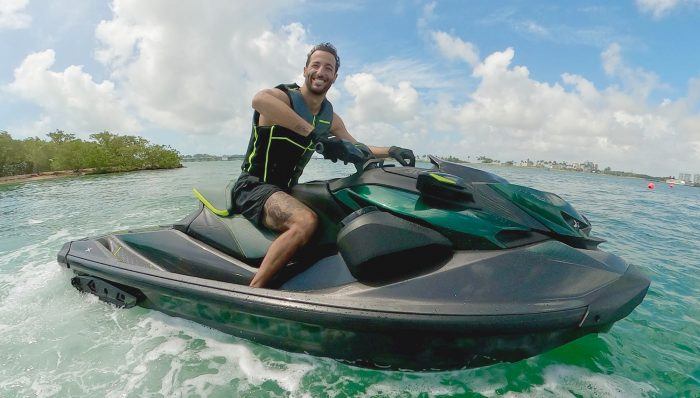
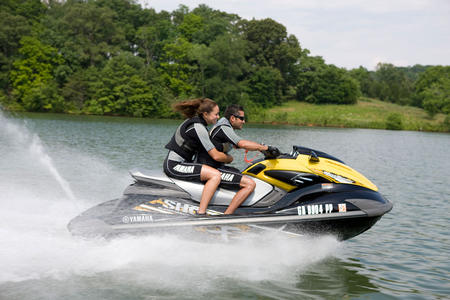
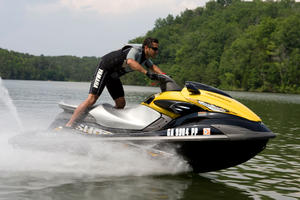
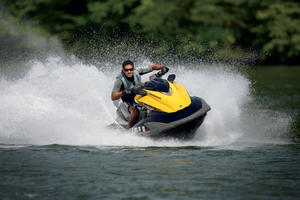
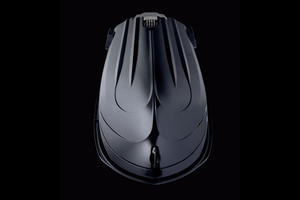
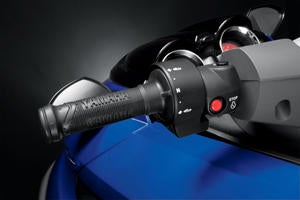
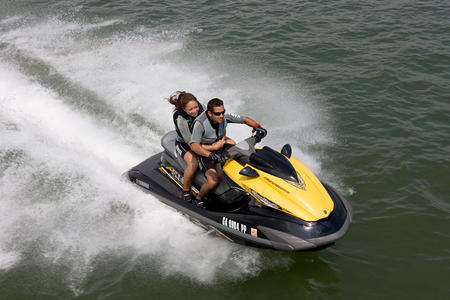



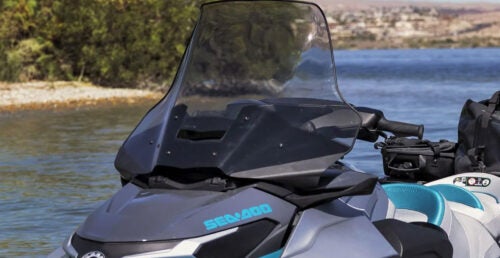
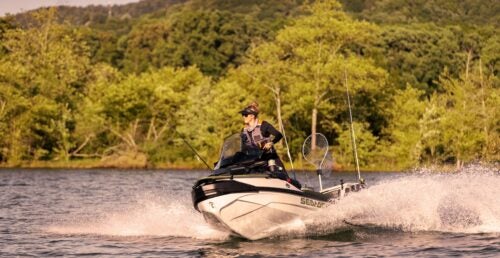


 Your Privacy Choices
Your Privacy Choices